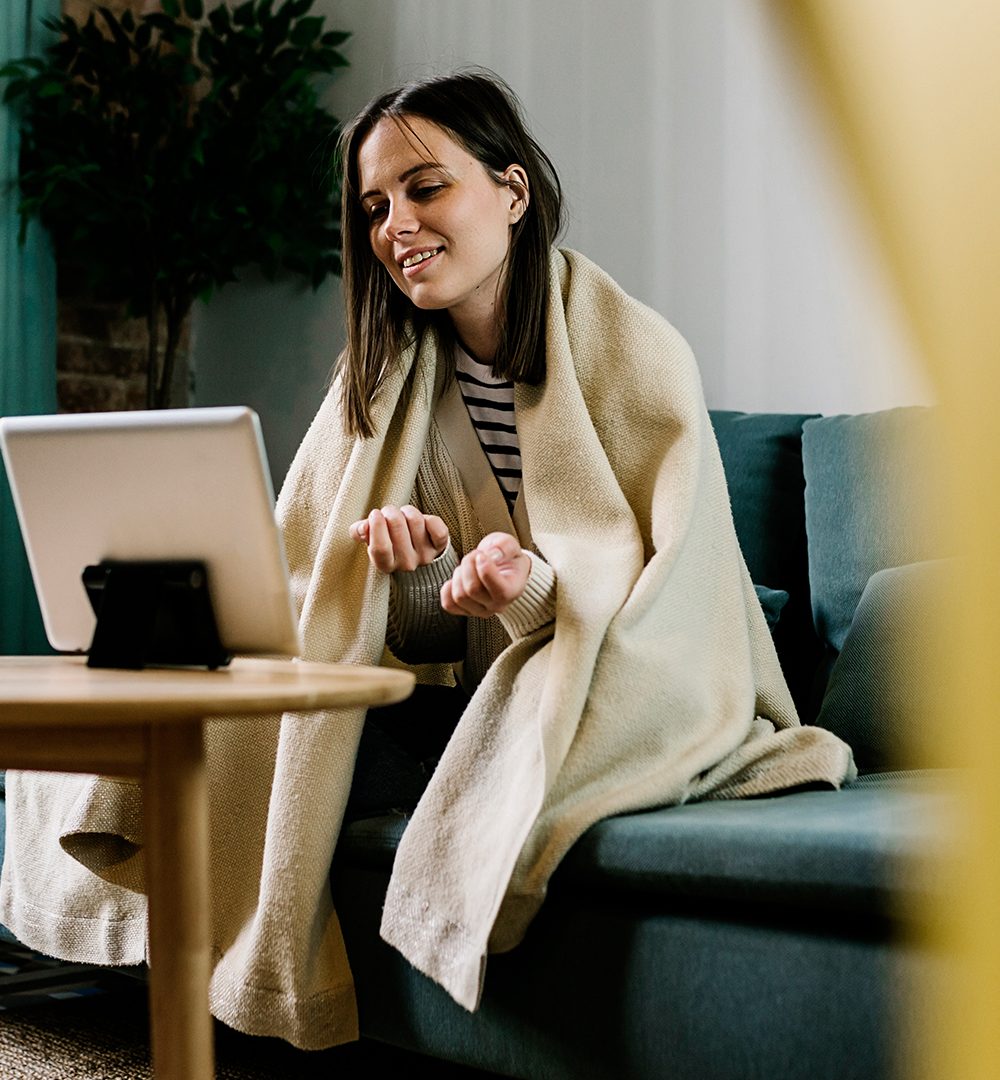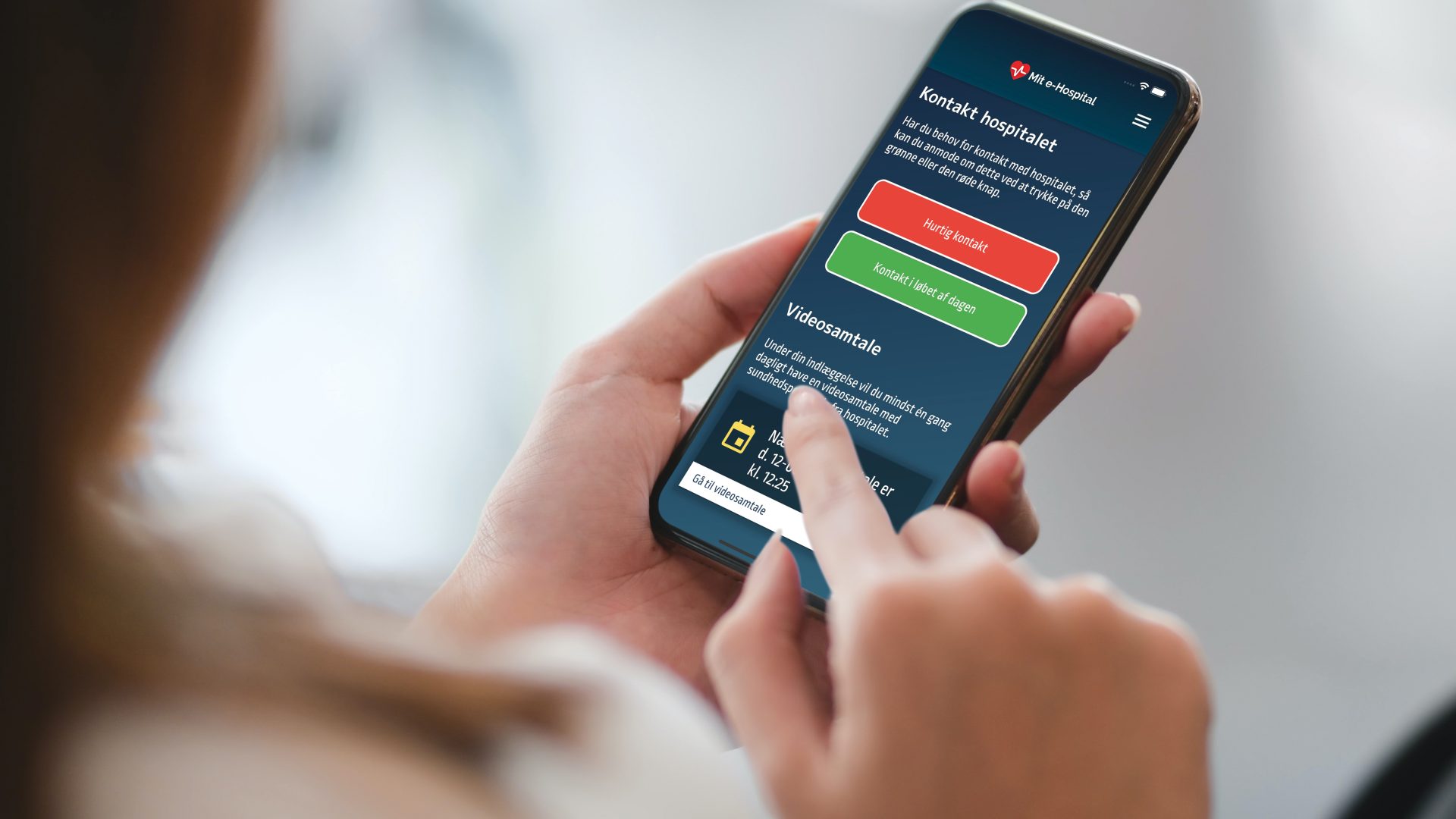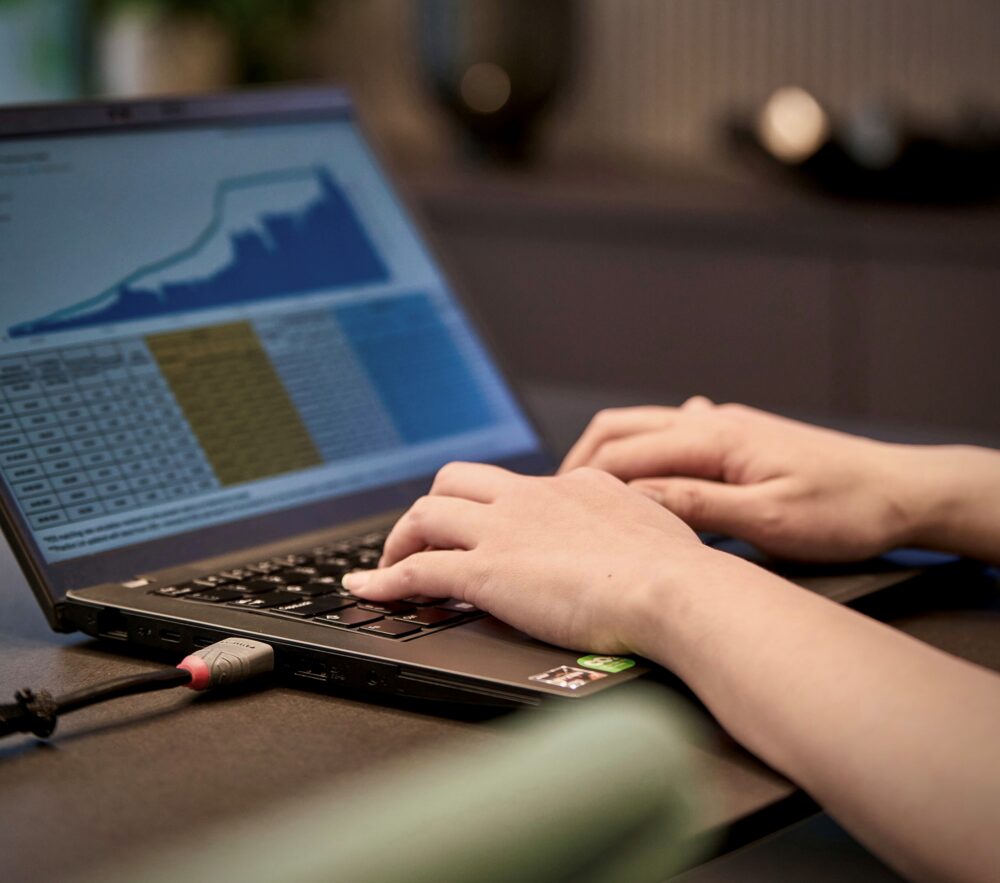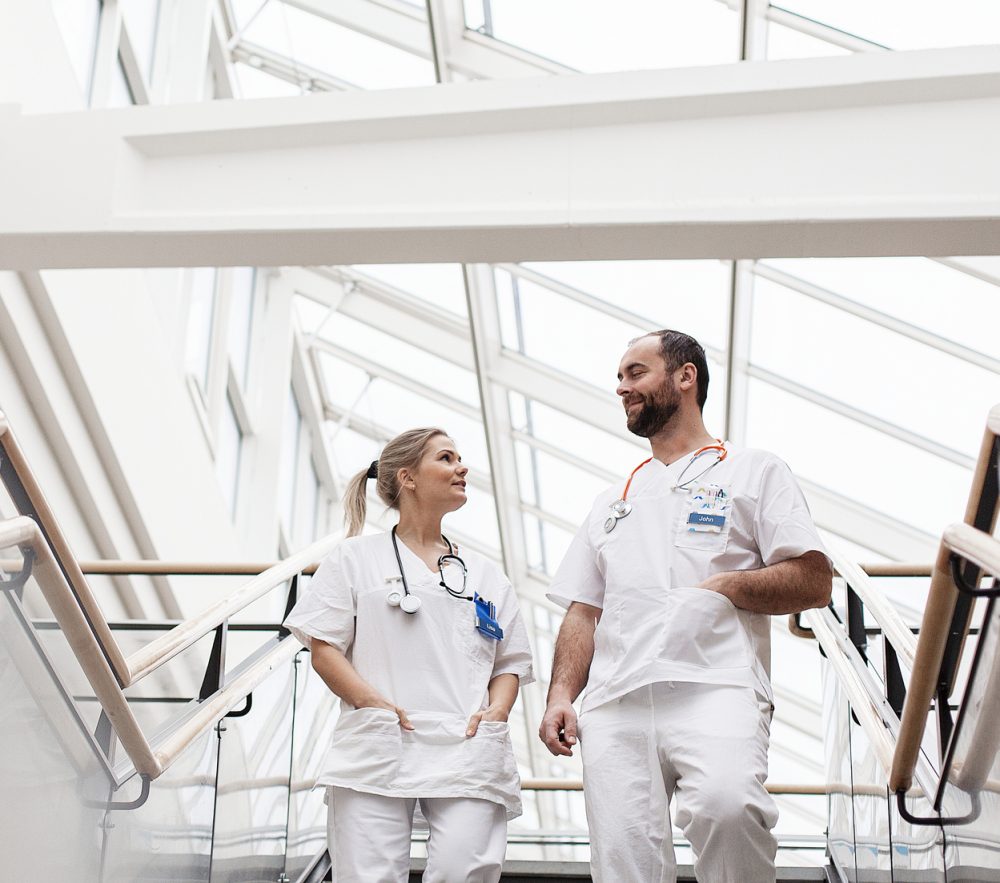How it works
The medical team identifies patients who are interested and would possibly benefit from home admission, and who agree to do that. While admitted at the hospital, the patient is taught how to measure their heart rate, blood pressure, respiratory rate, temperature and oxygen saturation using various medical devices. They also have the option of measuring their blood sugar levels, if needed. They are also shown how to download the app to their phone or tablet, log in using their personal ID and set up a PIN or use their device’s fingerprint or face recognition for security. They are shown the app’s functions, such as notifications, and the step-by-step instructions for self-reporting.
Once ‘admitted’ at home, the patient takes their measurements and self-reports them at specific times during the day, following the steps in the app. The app reminds them when to report and when to attend a virtual ward round with a doctor, which is done over video call once a day. They can also use the app to ask for direct contact with the hospital if they have questions or changes in their condition.
Back at the hospital, the medical teams use the care plan management system to monitor the patient’s condition using the selfassessment data entered in the app, and through scheduled video appointments. A ‘traffic light’ system alerts them to any issues, with red alerts for situations that need an immediate response, yellow for those that need attention within 30 minutes and green for minor issues, which should be responded to within 6 hours. They also receive text reminders of scheduled appointments.
A first of its kind medical tool
Nordsjællands Hospital and Netcompany are the first in Denmark to develop a tool to release beds, reduce the risk of infection, free up precious time for doctors and nurses and enable patients to be admitted and monitored in their own homes. The app has already caught the attention of other Danish hospitals who are keen to see how it develops and begin using it themselves. In the future, we hope that we will be able to offer My e-Hospital to more hospitals in Denmark and around the world, enabling a better use of resources and improving experiences for patients.






